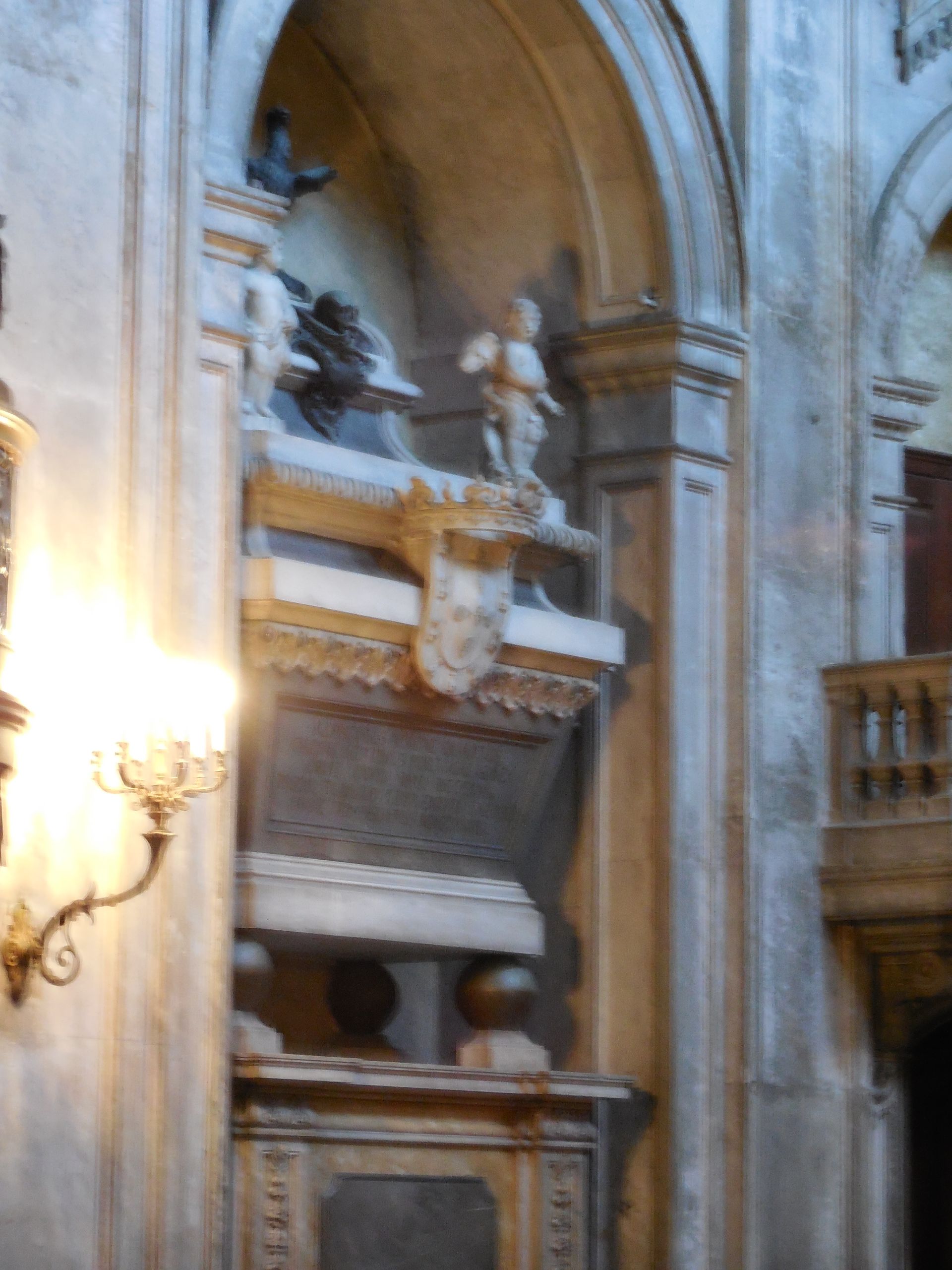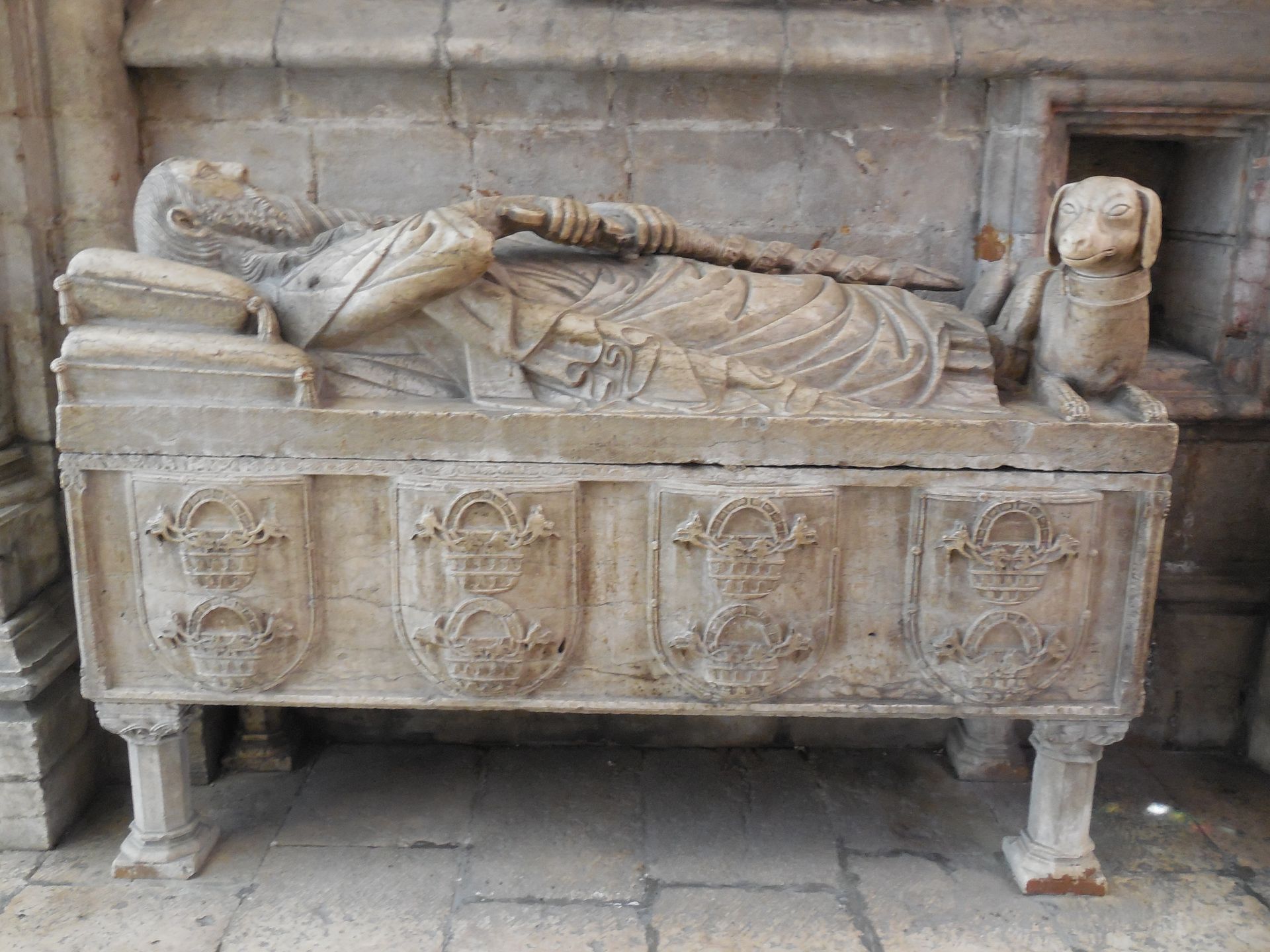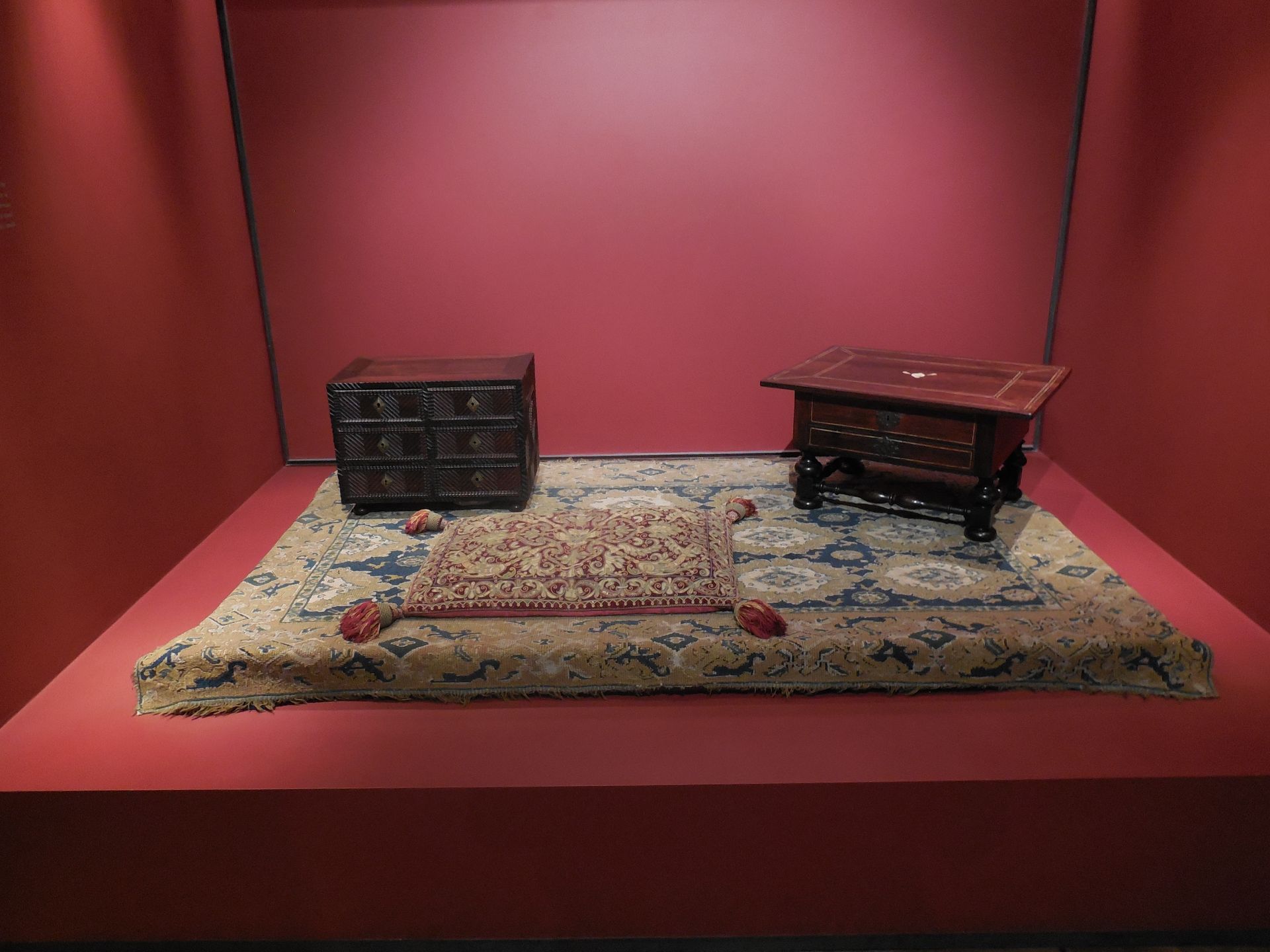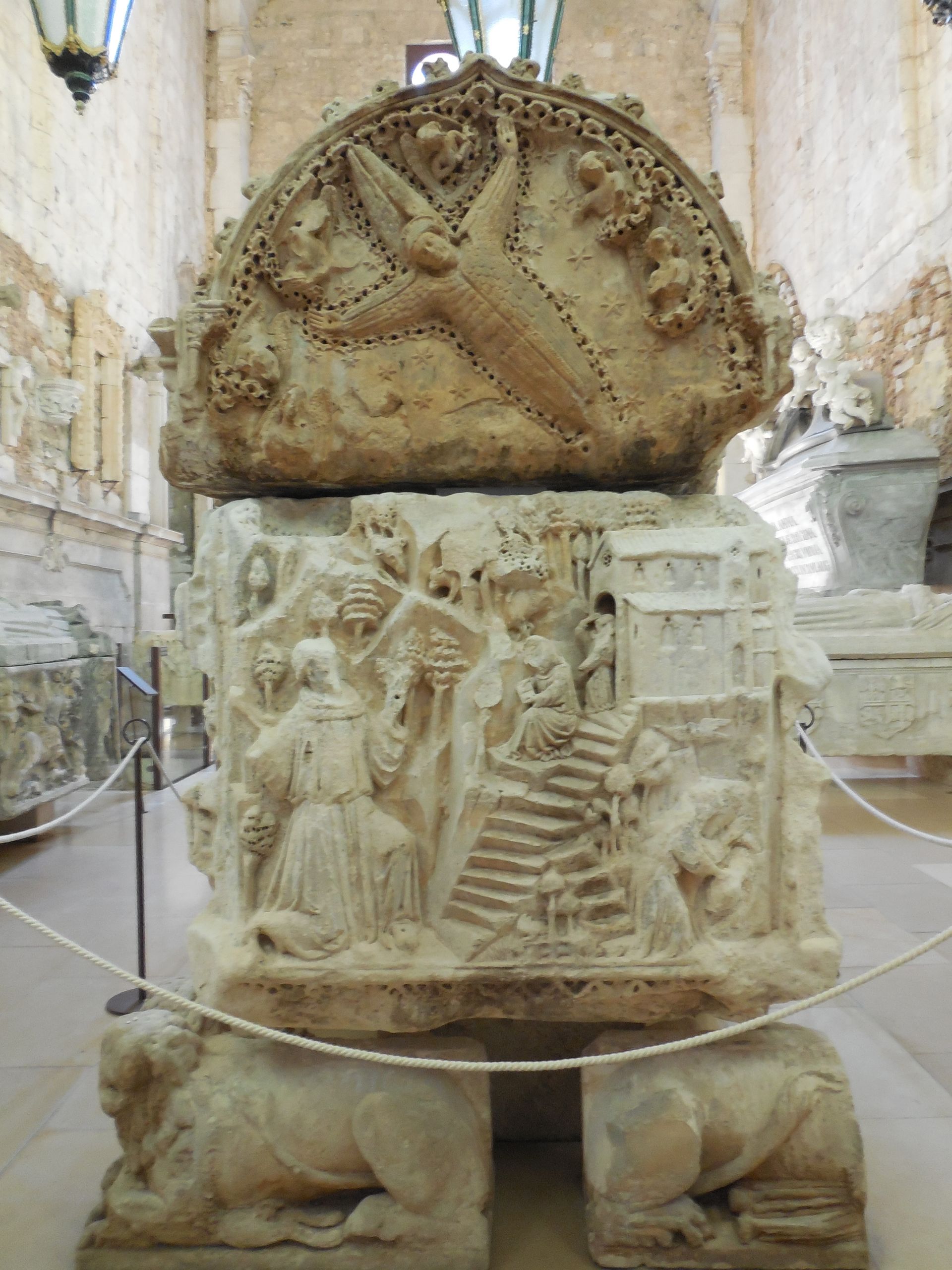LISBON / LISBOA
Between earthquakes and French invasions, little remains in Lisboa from the time of the novels.
In every trip, you make a stop, or turn a corner, or walk through a door and find the unexpected. That happened when we stopped in the Convento Carmo (also called the Igreja do Carmo) for its archeological treasures. Lo and behold, there sat the remains of several sarcophagi relevant to our story. We were astounded by our good fortune. the building is more intimate than most churches we saw and sits on a lovely plaza.
Below on the left is the grave of Constanza, dear friend of the Lady Inês and first wife of Pedro. Nearby sits the grave of the son she died giving birth to, Fernando, with his portrait on the lid. Fernando is Leonor's husband. These sarcophagi were moved here from Santarém – empty. As with so many graves of this age in Portugal, the original inhabitants were dislodged from their resting place and lost for all time.
Below on the right is one end of the grave of Ferdinand I of Portugal. He is the husband of Leonor and father of Beatrice.
The congregation in the church of the Convento Carmo largely died inside the building during services on All Saints Day, 1755 as the earthquake raged. You get a sense of the destruction as you stand in the space.

Down one steep hill, across the center of Lisboa and up another hill, we arrived at the Sé (the Cathedral). A delightful guide, Nuno Pereira Martins, let us inside the ropes to see the graves of Afonso IV and Queen Beatriz, parents of Pedro.
This is the graves of Kong Afonso (top with crown) and Queen Beatriz (at the bottom of the picture), parents of King Pedro.
The photo to the left is not a great photo - but I love that we found Pedro's parents.
Below is the grave of Fernando Lopes Pacheco - he is the son of Lopo Diogo Pacheco in the novels - and its a great looking grave.

In the novel, Pedro is a young child when he has an experience hinting at the nature of his father’s fierce protectiveness of the family’s right to the crown of Portugal. The scene is set in the Palace of S. Martinho in Lisboa. The palace, long gone by the late 16th century, was probably located not far from the city’s waterfront closer to the Limoeiro area. Though no one can be sure where this complex of buildings was specifically located. In the novel, I moved the palace to sit in what today is the Terreiro de Paço (Palace Square), because standing in the square today you can imagine it as part of a palace (which it was – the Ribeira Palace).
The Castelo de São Jorge sits high over the Tagus River on land originally a Roman fortification and later occupied by Visigoths and Moors. Moorish influences remain today for you to see as you walk the medieval walls.
Visit the castle's website for great photos: https://castelodesaojorge.pt). The Castelo was extensively renovated over the 14th century and became a regular home for the royal family when they came to Lisboa. Tucked outside the castelo against its walls you can find a small hotel, the Solar do Castelo, with a cistern and a collection of artifacts dating back to 600 B.C.

In the National Museum of Ancient Art, we came across a fascinating exhibit of a women’s room.
One legacy of Moorish occupation was a dais on which there would be rush mats and rugs with small pieces of furniture and lots of pillows. Women gathered here to sew or chat, essentially sitting on the floor rather than benches or chairs.
Chairs were rare furnishings in the 14th century. When we recall the court moved from palace to castle to palace with great frequency, you can see that a room of this style is readily transported.





